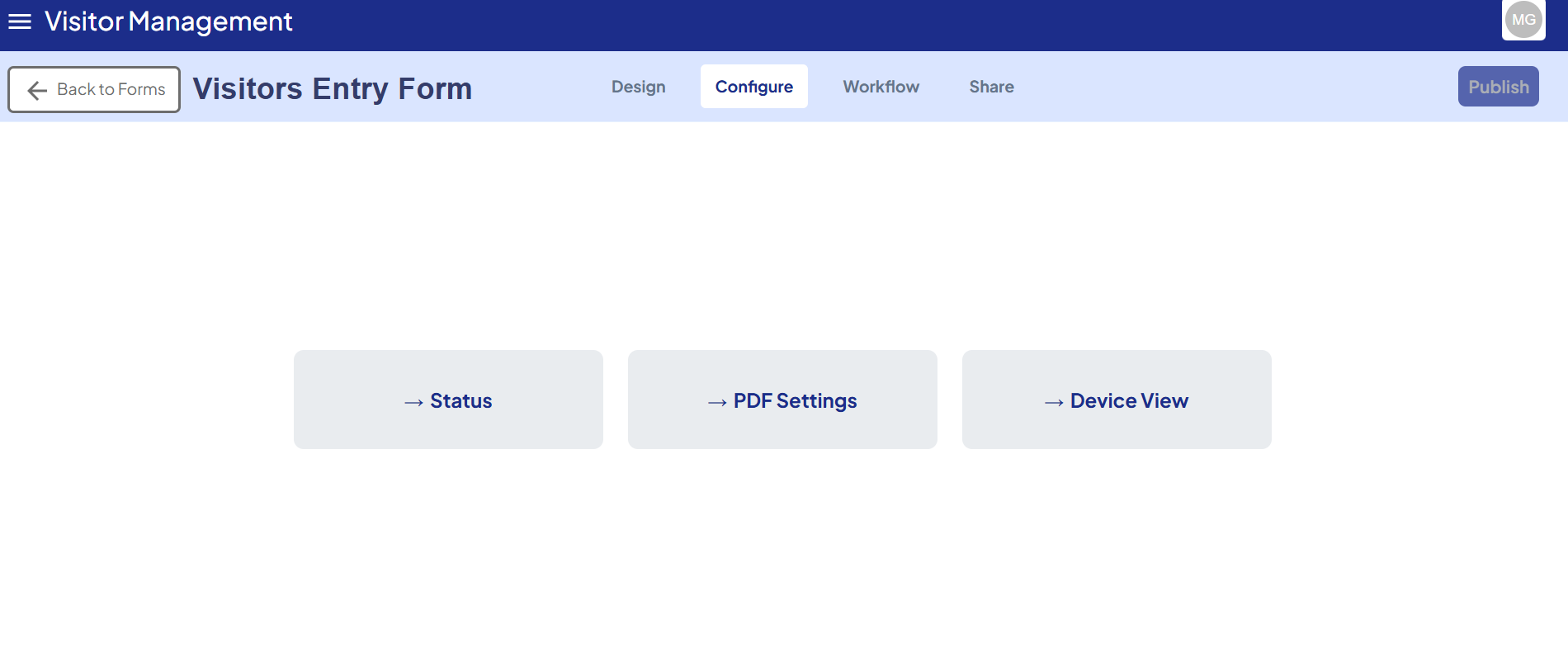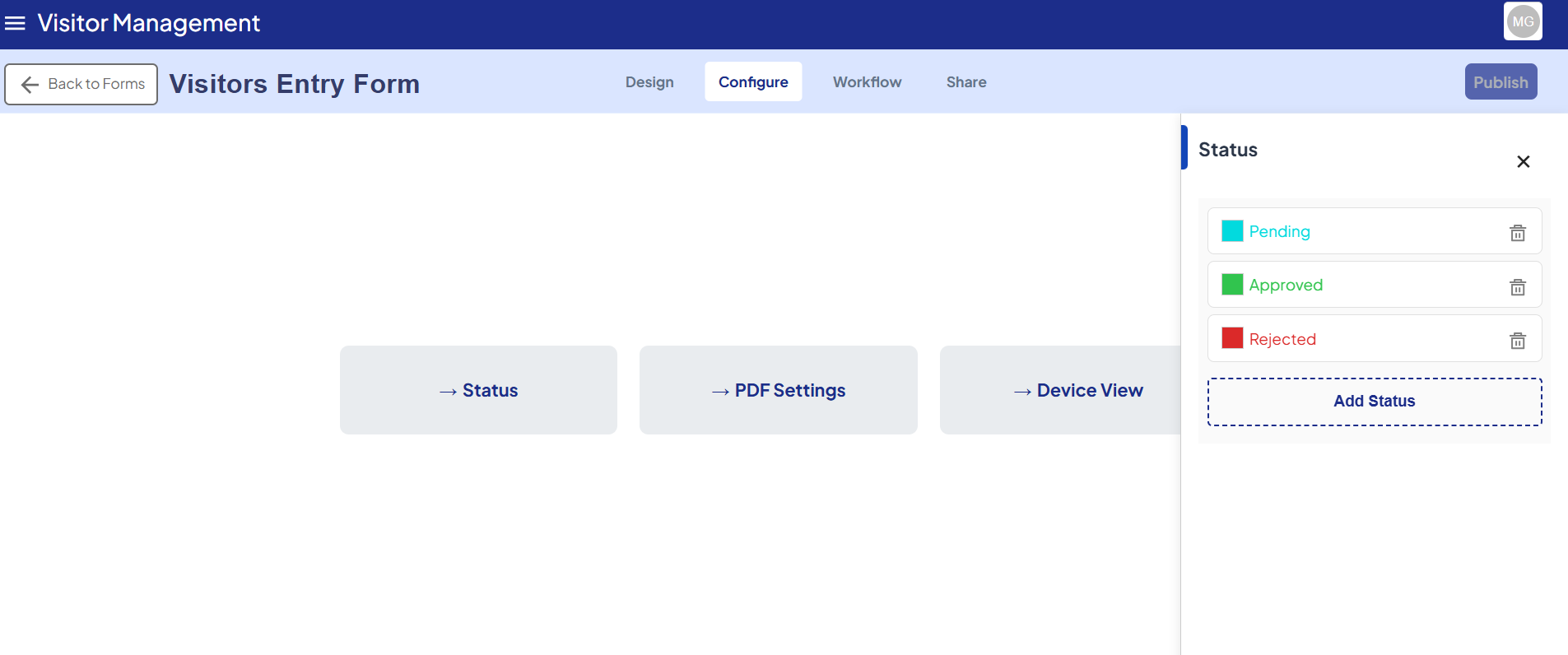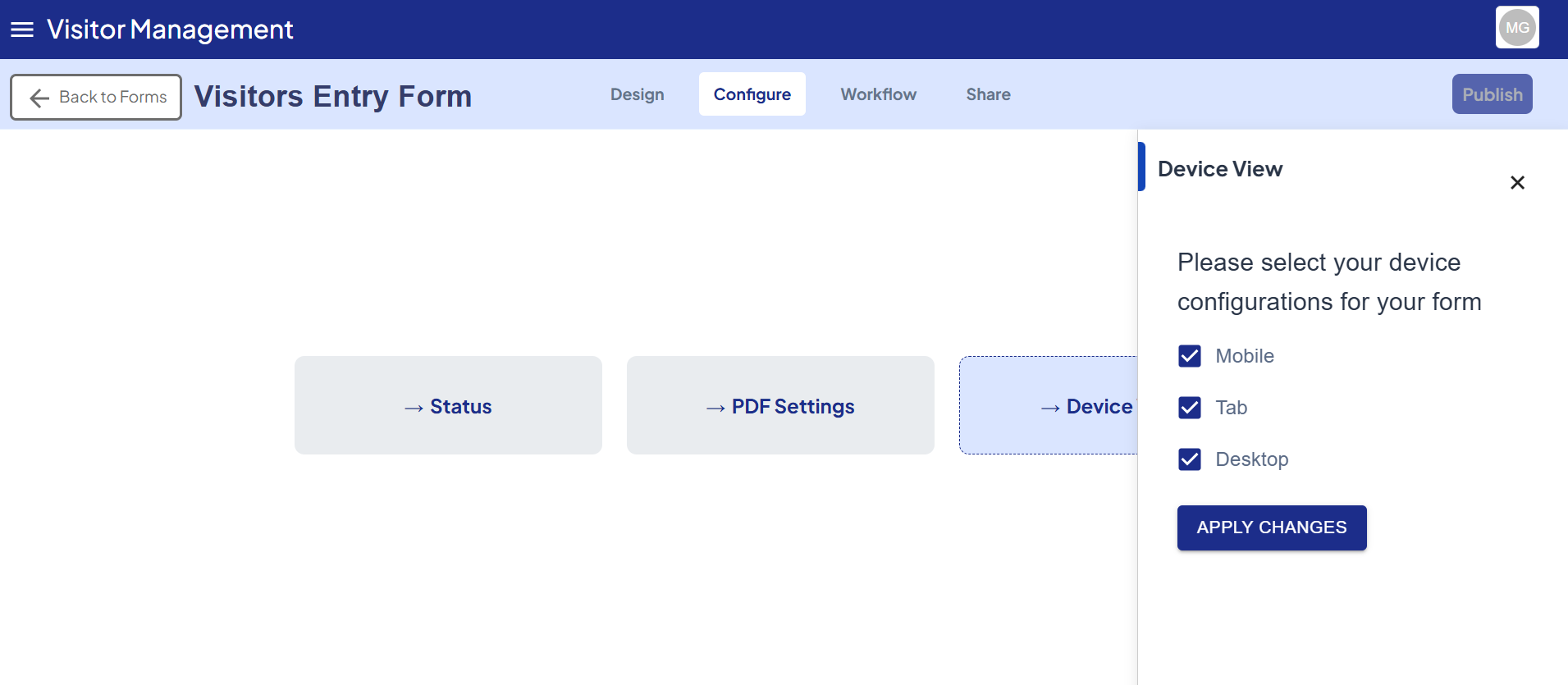Configure Tab
The Configure tab provides advanced settings to manage how your form behaves, appears, and interacts with users after design.
It includes three main sections — Status, PDF Settings, and Device Settings — each serving a unique purpose.

Through this tab, you can track form submissions using statuses, customize PDF outputs, and control which devices your form supports for an optimized experience.
Configure - Status
Statuses help define the current state of a submission — such as Pending, Approved, or Rejected.
They act as tracking indicators that allow admins and users to monitor progress throughout the form’s lifecycle.
In the Submission View, these statuses are visible to end users, giving them clear updates about their form’s progress.
Opening the Status Panel
- Navigate to your form and click on the Configure tab at the top.
- You will see multiple options like Status, PDF Settings, and Device Settings.
- Click the → Status card to open the Status configuration sidebar.
- The sidebar appears from the right side of the screen.

Adding and Managing Statuses
Inside the Status Sidebar, you can create and customize multiple statuses.
➕ Add New Status
- Click on the Add Status button.
- A new status entry will appear in the list.
- You can rename the status to something meaningful such as:
- Pending Review
- Approved
- Rejected
- In Progress
Each status entry has:
- A color indicator for quick identification.
- A delete icon 🗑️ to remove unwanted statuses.
Editing a Status
Click on the text field beside the color block to rename the status instantly.
Usage in Submission Workflow
Once statuses are defined:
- They become available in the form’s workflow or submission tracking system.
- When a user submits a form, an admin can change the status to indicate its progress (e.g., from “Pending” to “Approved”).
- On the user side, the updated status will appear alongside their submission record — providing a clear, visual indicator of progress.
Example Use Case
| Scenario | Status Flow Example |
|---|---|
| Loan Application | Draft → Under Review → Approved / Rejected |
| Support Ticket | Open → Assigned → Resolved → Closed |
| Registration Form | Submitted → Verified → Approved |
Configure - PDF Settings
The PDF Settings section allows you to manage how your form data is exported, downloaded, or attached as a PDF.
It ensures that submissions can be easily shared, stored, or printed with a consistent document layout.
You can configure:
- Custom PDF templates
- Page layout and margins
- Field visibility (decide what appears in the exported file)
- Auto-generate PDFs after form submission
This feature helps in creating official reports, invoices, or certificates automatically from form data.
For a detailed guide on creating and customizing PDF templates, click here.
Configure - Device Settings
The Device Settings panel allows you to control which devices your form can be accessed or displayed on.
This ensures that your form behaves consistently across different screen sizes and device types.
By configuring device access, you can restrict or allow users to open a form only from certain devices — such as Mobile, Tablet, or Desktop.
This helps improve user experience and ensures form layouts appear as intended on specific devices.

Device Configuration Options
When you open the Device Settings section, you will see the following options:
Please select your device configurations for your form
Available Options
| Option | Description |
|---|---|
| Mobile | Enables access and optimized layout for smartphone screens. Ideal for quick data entry or field usage. |
| Tab | Enables compatibility for tablets and medium-sized screens. Useful for kiosk-based or inspection forms. |
| Desktop | Provides the full form experience on larger screens — ideal for administrators or advanced form builders. |
You can select one or multiple options based on where your form should be available.
How It Works
- Navigate to your form and open the Configure tab.
- Select the → Device Settings option.
- Choose one or more device types (Mobile, Tab, or Desktop).
- Once saved, your form will only be accessible from the selected device types.
If a user tries to open the form on an unsupported device, a message will appear indicating that the form is not available on that device.
Use Cases
| Scenario | Recommended Device Setting |
|---|---|
| Quick field data collection | Mobile |
| On-site inspection or report entry | Mobile, Tab |
| Detailed registration or review forms | Desktop |
| Admin dashboard or internal audit forms | Desktop only |